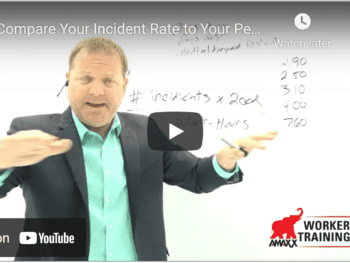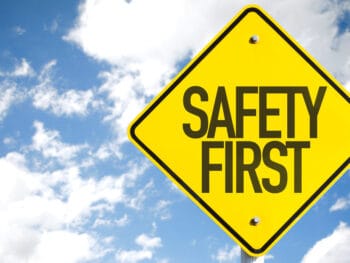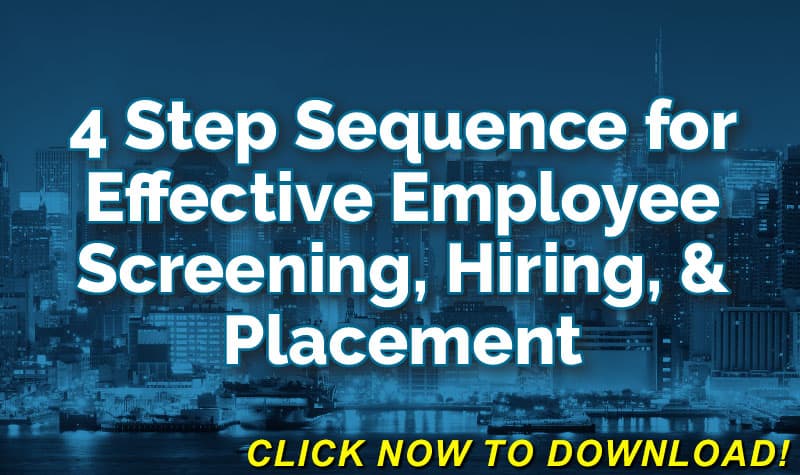
Overall, there were 37,461 motor vehicle deaths last year. The fatality rate of 1.18 deaths per 100 million vehicle miles traveled represents a 2.6-percent increase from the previous year. The vast majority of crashes are linked to ‘human choices,’ according to the NHTSA. The figures point to the continued need for employers to keep their employees safe behind the wheel — especially the youngest and oldest workers.
The Facts
While there was an overall 2.2 increase in the number of vehicle miles traveled on U.S. roads last year, that doesn’t account for the 5.6 percent increase in fatalities. Distracted related deaths decreased by 2.2 percent and drowsy driving fatalities were reduced by 3.5 percent, but other factors increased:
- Drunk-driving deaths were up by 1.7 percent.
- Speeding-related deaths increased by 4 percent.
- Failure to wear seatbelts contributed to an increase in deaths of 4.6 percent.
- Motorcyclist deaths increased by 5.1 percent and were the highest since 2008.
- Pedestrian deaths were up by 9 percent, the most since 1990.
- Bicyclist deaths increased by 1.3 percent, and were the highest since 1991.
Workers who are especially at risk of motor vehicle fatalities include the young — aged 16 to 24 — and older workers, of at least 55 years.
- Between 2011 and 2015, 470 workers in the younger age segment were killed in auto crashes at work. That accounted for more than 1/4 of all work related deaths in that age bracket.
- Motor vehicle crashes account for nearly 1/3 of all work-related deaths among workers age 55 or older.
Develop Policies
All employers who have workers that drive for business should have specific policies to ensure safe driving. These should include:
- A ban on texting and hand-held phone use while driving.
- A prohibition on driving while a worker is under the influence of alcohol, illegal drugs or certain prescription and over-the counter medications that may impact driving.
- Periodic training provided to promote safe driving strategies and discuss changes in road rules.
- Breaks during the work shift.
- Allowance for workers to take short naps — 30 minutes or less — in a safe location if they are tired while driving.
- Information on sleep disorders and other illnesses that may impact drowsiness.
Special attention should be paid to younger and older employees to ensure their safety on the road.
Protecting New Drivers
Young workers have the highest crash rate based on miles driven, largely due to their inexperience. They are typically less able than other workers to recognize and respond to traffic risks.
There are several steps employers should take to prevent accidents among the youngest workers.
1) Know the law. Young workers are restricted in terms of whether, when and how long they can drive for work.
- Workers age 16 and under in non-agricultural jobs may not drive for work.
- Workers age 17 may drive on public roads in non-agricultural jobs, but are limited by time and task: They must first complete a state-approved driver’s ed course and have no record of moving violations at hiring time; Their driving time may not exceed 33 percent of their workday, and 20 percent of their work week; Their driving must be done only during daylight hours.; They can only drive vehicles that are no more than 6,000 gross vehicle weight and have seatbelts for all occupations.; They are not allowed to tow another vehicle.; They cannot drive more than a 30 mile radius from the primary work place. Workers under age 21 are generally not permitted to drive a commercial motor vehicle across state lines.
2) Do background checks. Before hiring a young worker to drive, make sure he has a valid state license and has no record of moving violations.
3) Take precautions. Before sending the worker out on the road, make sure the assignment follows state laws for such things as nigh driving restrictions and transporting other teens. Additionally, make sure the worker has been trained on the safety features of the vehicle to be driven.
Reducing Risks for Older Workers
While older workers are more likely to adhere to safety regulations – such as wearing seatbelts, they have twice the risk of dying when they do get into a work-related accident compared to younger workers.
Part of the reason they have accidents is due to a decline in their physical and mental abilities that coincide with the aging process. Eyesight, hearing, motor skills and cognitive function can deteriorate with age. Employers should consider the needs of older workers in their safety and health programs.
4) Reconsider the options. Reducing the amount of time older workers are driving can prevent accidents. Consider whether work can be done without having to drive. If they must drive, make sure their schedules are such that they can obey speed limits to complete the tasks.
5) Offer some leeway. Allow drivers to talk with their supervisors to adjust their driving hours if they have problems with night vision, for example, or if they are too tired or uncomfortable driving in bad weather.
6) Base driving on their actual ability. Conduct periodic assessments of drivers to determine their proficiency, and restrict driving based on them.
7) Inform. Older workers who take a variety of medications may be unaware of the effects they can have. Offer information about the potential effects of prescription and over-the-counter medications on driving.
Conclusion
Preventable motor vehicle crashes take an unnecessary human and financial toll on businesses every day. By focusing on the reasons and taking steps to alleviate them, payers can keep their workers safe and on the job.

Contact: mstack@reduceyourworkerscomp.com.
Workers’ Comp Roundup Blog: https://blog.reduceyourworkerscomp.com/
©2017 Amaxx LLC. All rights reserved under International Copyright Law.
Do not use this information without independent verification. All state laws vary. You should consult with your insurance broker, attorney, or qualified professional.















